Auto Insurers Issue Customer Refunds: 'This is About Fairness'
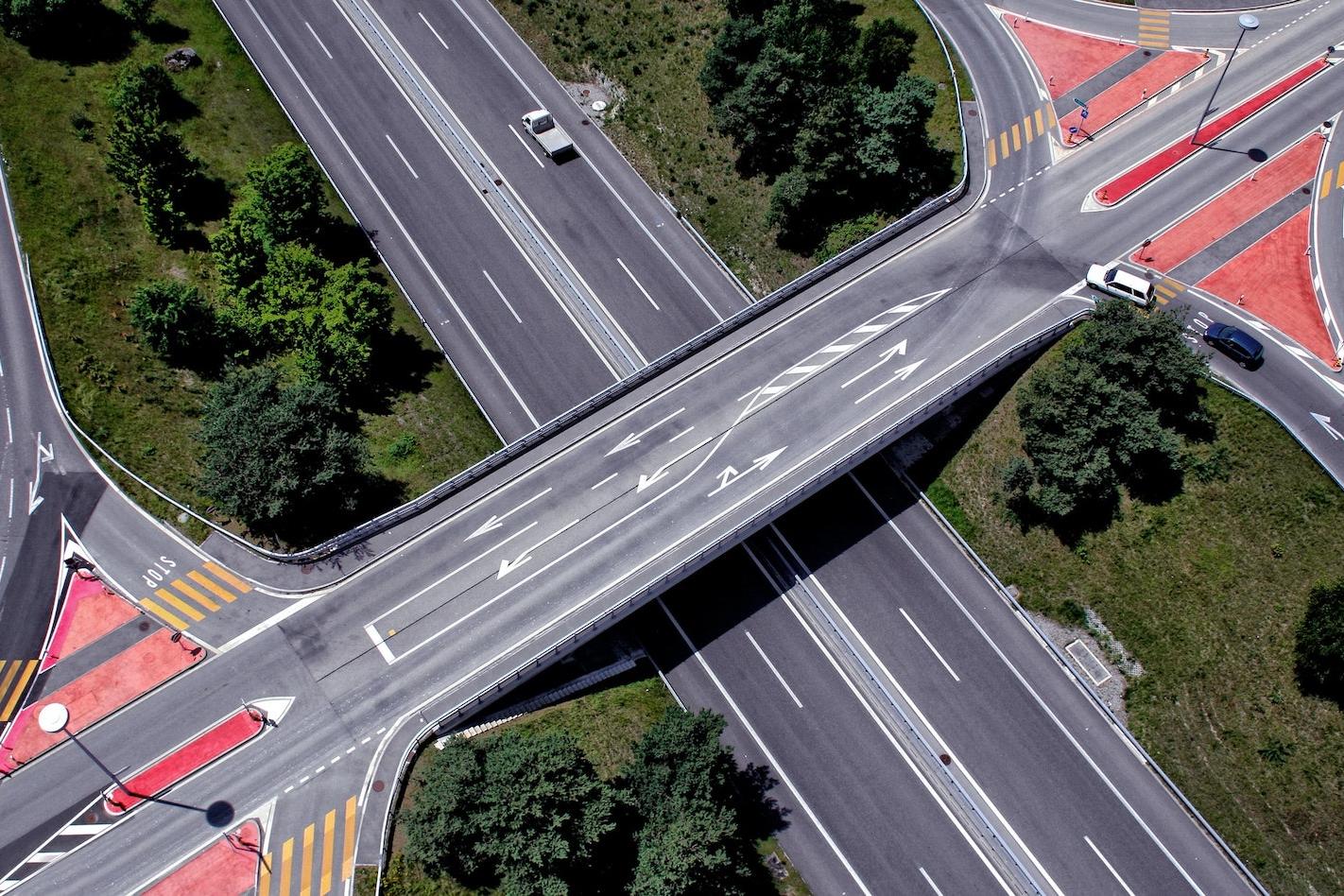
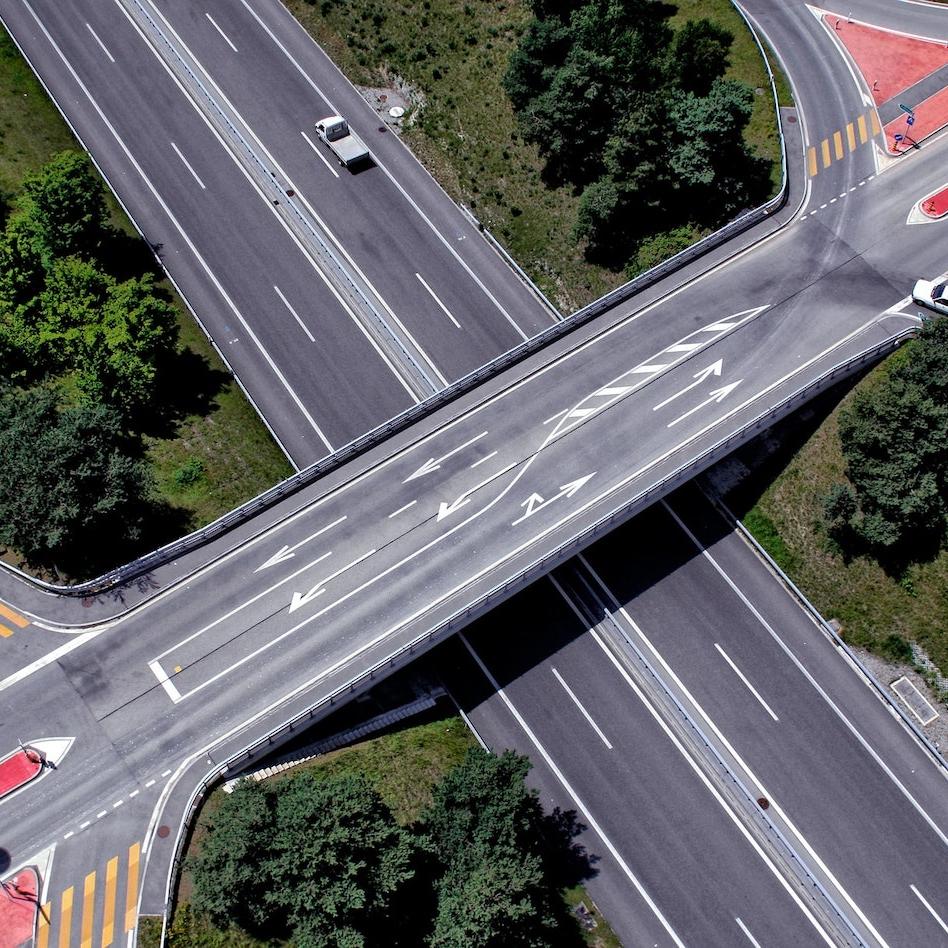
As millions of Americans stay home to help slow the spread of the novel coronavirus, the number of cars on the road is down significantly. Overall driving mileage decreased by 35 to 50 percent since states first implemented stay-at-home and shelter-in-place orders last month, according to an analysis from Allstate.
As fewer drivers take to the roads, the number of accidents is on the decline, too. In response, auto insurers including Allstate are issuing customer refunds to provide some financial relief at a time when more Americans are likely unemployed than ever in history.
Allstate plans to issue more than $600 million in refunds over the next two months, which will apply to 18 million customer policies, the company announced on Monday. This equates to roughly 15 percent of a customer's average monthly premiums in April and May, and the company may consider another round of refunds if shutdowns continue, a spokesperson told CNN. Additionally, customers facing financial hardship due to the coronavirus pandemic can delay two payments without penalty or pay only what they can afford, the company said.
"This is about fairness," Allstate CEO Tom Wilson told NPR. "This is about doing it and not waiting to be asked."
Allstate puts its money where its purpose is
“Allstate has been helping customers overcome catastrophes for 89 years since our purpose is to make sure they are in good hands," Wilson said in a statement on Monday. "We have learned to move quickly and put people first.”
Along with the so-called Shelter-in-Place Paybacks, the company opened up its Allstate Identity Protection product for all U.S. residents for the rest of the year, regardless of whether they are current customers.
"Shelter-in-place orders require us to work, take classes and visit friends virtually, which increases our exposure to cybercrime," the company's statement reads. Indeed, security vulnerabilities on teleconference apps like Zoom are well documented. And authorities have noted an uptick in scams related to the pandemic, from fake testing resources to fraudsters gathering personal information under the guise of verifying federal stimulus checks.
“We are seeing fraud across the board, everything from low-tech to very sophisticated schemes,” G. Zachary Terwilliger, U.S. attorney for the Eastern District of Virginia, told the New York Times. U.S. residents can get Allstate's free identity protection through Dec. 31, 2020, by signing up in April or May, the company said.
Other auto insurers step up to lend a hand
American Family Insurance, a smaller Midwestern insurer based in Madison, Wisconsin, will send out its own set of rebates of $50 per car for more than 2 million customers, the company announced separately on Monday.
"The COVID-19 pandemic has left a path of devastation across our planet. Many are suffering personally, financially and physically. Shelter-in-place orders and other social distancing also means folks are driving less," the company's CEO Jack Salzwedel wrote on LinkedIn. "As a result, we believe they’ve overpaid in their premiums. It’s our duty to return that premium, because it belongs to them."
The company is also suspending late fees and cancellations and offering payment deferral for customers who can't afford their premiums. “We want to do our part to help during this trying time," said COO Telisa Yancy.
Other auto insurers including USAA, Progressive and Farmers are also extending grace periods, allowing payment deferrals, and suspending late fees and cancellations in response to the pandemic.
The bottom line
Telling customers you won't cut off their policies during a public health crisis is arguably the bare minimum of what companies should be doing. But the move to issue refunds stands out at a time when many have found the corporate response to be lacking. Still, consumer advocates warn it's far from enough and encouraged companies to continue getting creative about ways to offer relief to customers who are struggling financially.
"Is it enough? Probably not," J. Robert Hunter, director of insurance for the Consumer Federation of America, told CNN. "[But] Allstate and American Family deserve praise for their industry leadership on this vital first step."
Image credit: Ricardo Gomez Angel/Unsplash
Palm Vs. Coconut Oil: What's the More Sustainable Choice?


Palm oil, the world’s most consumed food oil, has been long criticized – justifiably – for its role in deforestation, fires and human rights abuses in Southeast Asia. And that criticism is now having an impact on how consumers shop. Palm oil imports for food consumption are dropping in Europe and have stalled in the United States. It is likely that that growing awareness about the environmental and social impacts of palm oil on the environment, biodiversity, and local communities has led some consumers and brands to switch to alternatives like coconut oil.
Coconut oil: a more viable alternative?
The trendy choice? Coconut oil has long been considered beneficial for not only for the environment, but human health, too. In the past few years, coconut oil has become a popular cooking and cosmetic choice, appearing on more and more shelves and ingredient labels across the country. Sales in the U.S. have soared over the past decade before declining in recent years over health concerns. It’s even been mentioned, unfortunately, as a false remedy to combat COVID-19. Overall, however, the coconut-based products industry is bullish on its future.
“There was an explosion of coconut onto the market,” said Molly Renaldo, the coconut program manager at Fair Trade USA. “There's always a lag between a trend or a fad, and then knowledge about what that really means in the greater scheme of the food system.”
The question now is whether or not coconut, which grows in the same tropical regions as oil palm, is really a sustainable alternative. Like any discussion on sustainable commodities, there’s no simple answer. Nevertheless, the coconut palm tree does have the potential to be a far more sustainable alternative due to several intrinsic factors that differentiate it from oil palm, alongside early efforts from smaller brands to source sustainably.
The main argument in favor of palm oil, and one that is touted again and again by the industry, is its productivity. Namely, for any given area, oil palm trees produce more quantity of food oil than any other plant – coconuts, soy, sunflower or canola. But in reality, it’s not fair to evaluate all food oil crops this way. Oil palm, coconuts, and soy often grow in tropical regions where biodiversity and carbon stock are high, meaning the impact to the environment of a hectare could be greater than a temperate crop like sunflower or olives, both of which can be grown in less biodiverse regions.

Seaside coconuts growing wild on Simeulue Island, Indonesia (photo credit: Aluan)
When comparing coconut vs. oil palm, biodiversity is one important factor
With coconut, there’s another factor – it produces more than oil. Milk, cream, water and activated charcoal are all coconut byproducts, all of which are growing in popularity in the U.S. and Europe. Oil palm produces, as its name says, basically only oil.
Then there’s the fact that coconuts, at least in Southeast Asia, grow primarily in mixed-use plantations. Visit coconut and oil palm plantations in the top of the top growing regions of Southeast Asia and you’ll notice several key differences. Oil palm is found in massive, industrial monoculture plantations. Even within smallholder farms are usually only growing oil palm, the evidence suggests it doesn’t grow well with other plants. Meanwhile, coconut farms, grown primarily by smallholders, are mixed with crops like banana, cacao, and coffee, and farmers then often integrate them with the surrounding tropical landscapes. Coconut plantations look and feel more natural than oil palm plantations.
Consumers: focus on how the product is grown
Of course, this is not universally true. The international campaign Palm Done Right is working with farmers to grow oil palm in mixed-use agroforestry settings in South America, incorporating regenerative agriculture. There’s also the Roundtable on Sustainable Palm Oil (RSPO), which has faced criticism in the past for allowing bad actors like Indofood to stay on as members long after its failure to uphold standards was made clear – but in fairness, the RSPO has learned. Its latest standards, released in 2018, are much stronger when it comes to halting deforestation, protecting peatlands, and respecting human rights. At this point, though, RSPO only accounts for about 19 percent of global palm oil, and Palm Done Right is a tiny niche player.
The truth is, as with most products, how it is grown and how it gets from the farmer to your dinner table or bathroom matters more than whether it not it's coconut oil or palm oil. While far too much palm oil is grown on plantations that are responsible for deforestation, human rights abuses, and illegal land grabs, some palm oil is grown more sustainably. Similar, if coconut is grown with the use of child labor, or, as is the case in part of Thailand, monkey labor, it’s likely not a better choice ethically, either.
Memo to consumers: buy smartly and ethically
What is needed is more demand, from brands and consumers, for ethical, traceable coconut oil. Thankfully, some brands are leading the way in creating a market for sustainable coconut oil, such as Lucy Bee and Harmless Harvest.
Lucy Bee, for example, is a United Kingdom-based seller of natural ingredients and gifts, many of which use coconut oil. The company saw what happened in the palm oil industry, and when it started sourcing coconuts, Lucy Bee said it wanted to ensure it was not just using another oil with the same, just less known, issues.
“We have seen the negative impact from other ingredients such as palm oil where it is used en masse and in huge demand causing deforestation, we do not want to see the same thing happen with coconuts,” said Lucy Buckingham, the founder of Lucy Bee, to TriplePundit. “When we were looking into selling coconut oil it was very important to us that we had complete traceability from plant to the shop floor.”
There’s no equivalent to the RSPO yet for coconuts, but groups like the Fair Trade Sustainability Alliance (Fair TSA) and the Rainforest Alliance are starting to scale up certification. Lucy Bee decided to work with Fair TSA, which ensures that a larger portion of the sales from coconut does directly to farmers.
“We went with Fair TSA due to the fact that the premium we pay for our crops goes directly back to the local communities,” said Buckingham. “They also have control over how the money is spent and there is complete traceability.”
Another brand taking a stand is Harmless Harvest, based in San Francisco. The company has become one of the largest sellers of organic coconut water – found on shelves in Whole Foods, Sprouts and numerous other supermarkets. From nearly the beginning, the company says it wanted to make sure that it was sourcing coconut water sustainably.
“We believe it is not a mutually exclusive concept for a company to both be successful and socially responsible,” said Heather Cutter, Harmless Harvest’s senior vice president of brand, innovation, and marketing to 3p. Harmless Harvest says it also sources 100 percent certified, traceable fair trade coconut water, and sees ethical sourcing as a winning business proposition. “We [aim] to be a driving force for positive and sustainable change for these farmers and communities, which ultimately means a better supply and quality of coconuts for our products.”
As more brands seek to expand into the coconut market, let’s not make the same mistake we made two decades ago with palm oil. Lucy Bee and Harmless Harvest show that there’s a better path – incorporating sustainability, traceability and farmer empowerment from the very beginning.
“As coconut demand increases, we hope more brands commit to ethical sourcing practices,” said Cutter. “Brands must use this precious resource responsibly.”
Editor’s note: This story was supported by a grant from the Pulitzer Center.
Image credits: Aluan; Jervis Gonzalez
Recycled Aluminum Could Allow for Next-Gen Energy Storage
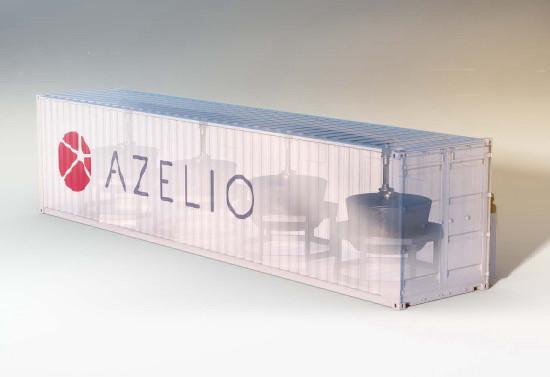
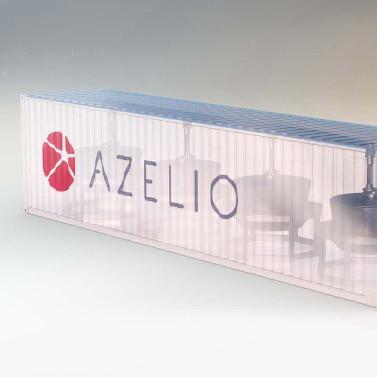
What happens to renewable energy when the sun does not shine, or the wind does not blow? One answer to the question is to use diesel generators to cover the times when solar panels or wind turbines stop providing electricity - but the use of generators ends up creating more carbon emissions. Another answer is to store power that the sun generates in batteries. However, that solution creates a recycling problem as batteries need rare earth minerals. One company offers what it says is a more environmentally friendly energy storage option: store solar power, or power from any source for that matter, without batteries by using an alternative manufactured out of recycled aluminum.
That company is Azelio, a Swedish energy startup. The first site to use the company’s energy storage technology is at the Noor Ouarzazate solar complex in Morocco, a 580-megawatt (MW) power plant. Azelio’s technology helps to supply renewable power around the clock at this solar complex, one of the largest concentrated solar plants in the world.
Azelio inaugurated its renewable energy storage system Moroccan solar plant earlier this month in an event co-hosted with the Moroccan Agency for Sustainable Energy (Masen). Government representatives from several countries attended, along with leaders from the World Bank and the International Finance Corporation.
“Being present on one of the world’s leading arenas for renewable energy marks a big step for Azelio and is the platform from where we take the next step in becoming a global industrial player,” said Jonas Eklind, CEO of Azelio.
Azelio’s technology scored enthusiasm for what the company says is its energy storage technology’s ability to have a 90 percent round-trip efficiency. As the renewables news site Recharge explained, if the technology works as Azelio says it does, then only 10 percent of the energy stored during this process is lost.
“Our collaboration with Azelio is a good example of Masen’s R&D strategy to evaluate, co-develop and promote disruptive solutions,” said Mustapha Bakkoury, CEO of Masen. “We are proud to have Azelio’s energy storage represented on Noor Ouarzazate solar complex.”
The basics of Azelio’s thermal storage technology
Azelio’s operations run in a former Volvo factory, where it now manufactures its thermal energy storage system – which, once it’s complete, looks as if it is housed in a shipping container.
The company uses recycled aluminum in the system to store energy in the form of heat. Aluminum has a high degree of energy density which enables local energy production at all hours of the day, even in remote areas lacking electricity. The use of aluminum could work similarly to the use of molten salt for energy storage at some solar power installations.
There is a clear need for technologies such as that of Azelio’s as millions of people globally lack access to an electrical grid. That’s including 57 percent of the population in sub-Saharan Africa and almost 10 percent of the population in Asia.
Aluminum is the third most common element and the most common metal in the earth’s crust. Aluminum’s largest environmental impact comes from the energy used to manufacture this metal, but such the use of recycled aluminum helps reduce this impact. The stored energy in the recycled aluminum converts into electricity on-demand with the company’s modern version of a Stirling engine.
Is this system scalable?
Azelio describes the engine as being “unique in its ability to provide incredibly efficient conversion of thermal energy into a mechanical movement that can generate electricity.” The company insists its system is scalable from 100 kilowatts (KW) to 100 megawatts and can supply electricity for a wide variety of customers, including hospitals, factories, mining operations or a small community.
Azelio says it has successfully demonstrated that its technology is feasible in 2018. Since then, the company received interest for power systems that together generate almost 4 gigawatts of clean power.
But as Recharge’s Leigh Collins recently pointed out, Azelio has not been forthcoming about neither the price of this system nor the costs of storing power. The company has also not disclosed how big its system is at the Morocco test site. “It is therefore difficult to compare Azelio’s system with other build-anywhere long-duration intermittent energy storage . . . technologies,” wrote Collins.
Last fall, the company announced it would start another energy storage project at Abu Dhabi’s Masdar. In the meantime, the company says it has more plans for commercial installations of its technology later this year and will have the ability to launch mass production of its energy storage systems 2021.
Image credits: Azelio
Utility Workers, the Forgotten Heroes of this Pandemic
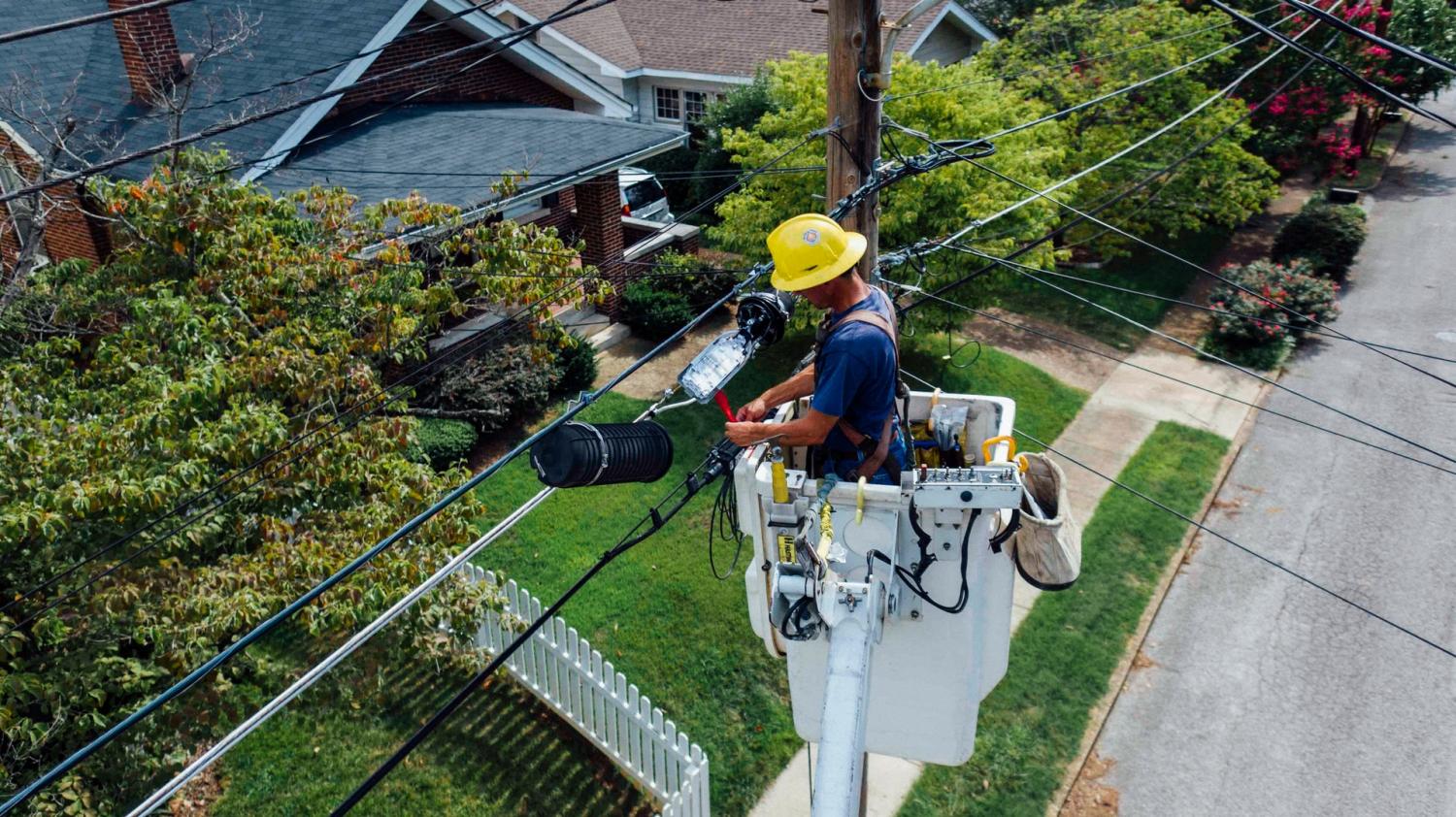
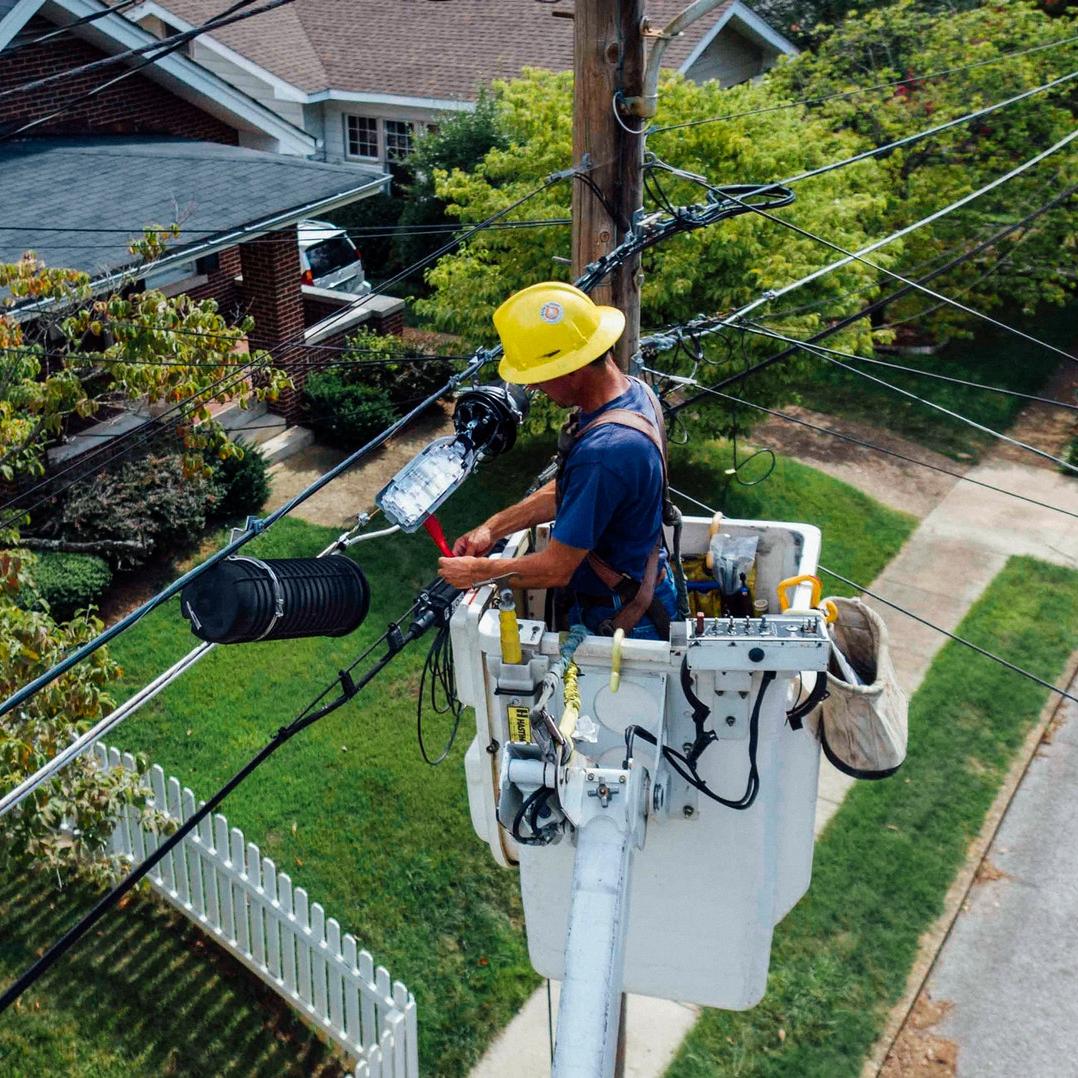
We’re grateful for nurses, doctors, physician assistants, respiratory therapists and so many others in the medical field. We’re also grateful for people who work in grocery stores, the restaurants delivering and offering curbside food, and all the delivery workers bringing packages to those of us self-quarantining or social distancing at home. When sending up thanks for all these people, many of us forget another critical job that must go on during the COVID-19 pandemic: utility workers who keep our water clean and flowing and our lights — and laptops — on.
Utility workers face several challenges in the midst of this pandemic
Utilities out of necessity already have disaster plans in place. Depending on where in the country a utility is based, such planning could account for a wildfire, drought, flood, hurricane, tornado, or any number of other potential disasters. Many utilities also have flu pandemic plans, which typically include contingencies for “high absenteeism” related to public health, disruptions to the supply chain, and limited support staff available. That preparedness is proving to be a help now.
According to a recent report from Edison Electric Institute, electric utilities could expect up to 40 percent to be out sick or quarantined. This at a time when everyone who can is working from home, increasing demand for both water and electricity. One utility executive told TriplePundit that contingency plans run several layers: He has two backups for every essential worker, and that person has two backups and on and on.
At the same time, this executive noted that social distancing is a challenge when two utility workers are in a truck together. These issues are even more troubling for small utilities, where potential staffing shortages could spell disaster. Several utilities across the country have started compiling lists of volunteer operators from retired workers and neighboring utilities just in case.
How utility workers are doing their jobs in a much different world
Austin Energy (AE) is one utility that agreed to speak with 3p. We reached out to the company to find out what it had instituted in the face of COVID-19. The utility activated an Incident Command System at the beginning of March and formed a “Pandemic Planning Team” that meets virtually every day. Almost 70 percent of AE’s staff are teleworking and the rest, including line workers and some call center staff, have to report to job sites as essential personnel. Those essential workers have a daily temperature screening, observe social distancing where possible, and sanitize equipment regularly. Fortunately for these workers, so far Austin is not a hot spot.
The same cannot be said for New York City, the epicenter of the coronavirus outbreak in the U.S. Utility workers there face a starker reality. As of publication, Con Edison, the utility serving the city, has 170 confirmed cases and three deaths with about half of its personnel working remotely. Likewise, throughout the state, utilities are feeling the pressure.
For example, the New York Independent System Operator (NYISO), the grid operator for New York state, has some essential staff living at control centers outside Albany in response to the shelter-in-place guidance at operation hubs from the U.S. Department of Homeland Security. Likewise, 200 National Grid personnel are living on-site and will be replaced by a second set of 200 after a month, continuing to cycle as long as necessary.
Water utilities face the same hurdles, as well as additional challenges. There are a lot more water utilities across the country than electric utilities, and many of them are very small, some with staff in the single digits. Further, some utilities have to deal with keeping water systems going when people are flushing disinfecting wipes down the toilet, clogging up sewer lines. As with the case of the power generation sector, utility workers who staff water systems across the U.S. are also sheltering in place to ensure continued, reliable service.
Vulnerable populations are at more risk now
Many people in this country were vulnerable before the pandemic and are more so now. In response, many U.S. utilities are suspending cutoffs, ensuring that customers who are unable to pay their utility bills will not be left in the cold without power and water. Some communities are lagging behind in this regard, but will have to rise to the occasion as the situation worsens.
Detroit, for example, is emerging as the latest hot spot for COVID-19, and the vulnerability of its population, including pockets of poor water and air quality, could exacerbate the situation. Ensuring at the very least that people in those communities are not shut off from their utilities is the right thing to do.
We should continue to thank and laud the frontline medical personnel, food service and grocery personnel, and delivery drivers. They deserve gratitude, protection and fair compensation. While most of us do not think about where our electricity or water comes from, as we are sheltering in place in our homes, let's remember the utility workers who keep our lights on and our taps flowing are on the front lines, too.
Image credit: Kelly Lacy/Unsplash
The 3D Printing Brigade Leading the Fight Vs. COVID-19


Over the past few weeks, 3D printing has become a critical tool in the fight against the novel coronavirus. By now, we all know how this pandemic is close to overwhelming the healthcare system across the U.S. and the globe, as everything from N95 masks to ventilators are in dangerously short supply. But heroic efforts are also underway: Citizens sewing masks to help supply hospitals and clinics, while garment companies are retooling their factories to make the personal protective equipment (PPE) necessary to safeguard the healthcare professionals who are on the front lines.
But as stories emerge of critical equipment arriving in some U.S. states that do not work, such as ventilators, 3D printing has become another arsenal as individuals and companies large and small do what they can do to assist during this crisis. From face shields to ventilator valves to nasal swabs, volunteers with 3D printers are doing what they can to compensate as the federal government struggles to gather the resources hospitals desperately need.
3D printing efforts rise up, from Italy to Silicon Valley
The mobilization of 3D printing to take on the coronavirus outbreak first arose in Italy. Engineers at the startup Isinnova started printing valves for respirators when orders for such replacements couldn’t be shipped fast enough. Since then, other organizations worldwide have moved quickly to help healthcare workers treat those stricken by COVID-19.
In Silicon Valley, the nonprofit Maker Nexus has helped gather volunteers with 3D printers to make face shields for healthcare professionals to use as they treat the most seriously ill patients. As of last week, production of these much-needed face shields has reached between 500 and 1,000 daily. Similar efforts, such as this crowdfunding campaign in North Carolina, strive to raise funds and recruit volunteers to make these face shields readily available. On Facebook, the Open Source COVID-19 Medical Supplies Group is a resource for people who want to help and have 3D printers ready.
Moving beyond doorknobs
As we’ve all been reminded during the constant handwashing campaigns, doorknobs are among the most notorious hosts of viruses and bacteria. In Belgium, the 3D printing company Materialise now offers free files that users can download and in turn allow for the printing of door handles that require an “elbow bump” move rather than having to use our fingers.
Meanwhile, HP Inc. has launched a portal at which users can download various designs of equipment that healthcare workers need, including face shields, masks, wrist guards and modified door openers.
Small efforts worldwide help to confront this pandemic
NASCAR, yes, the organization that manages the auto racing circuit, says it has coopted the five 3D printers at its North Carolina research and development center to make face shields that it then distributes to hospitals across the Carolinas and Virginia.
Italy-based Iveco, owned by CNH Industrial group, has also mobilized 3D printers at two factories in Spain to manufacture face shields, masks and ventilator parts (a prototype is shown in the above photo).
And Down Under, Mat Bowtell has pivoted his charity to printing face shields for Australian healthcare workers. “With 3D printing, we’ve been able to go from making hands to making face shields in a matter of, well, days,” Bowtell said in an interview with the Guardian. “To completely revamp our line, that’s how agile this technology is and how flexible it is.”
As for the engineers at Italy’s Isinnova, their story has turned into a tale of how no good need goes unpunished. According to one medical trade publication, the company has been threatened with legal action from the manufacturer that makes the original ventilator valve part.
Image credit: Iveco/3BL Media
A New Black Eye for Keystone XL Pipeline: COVID-19
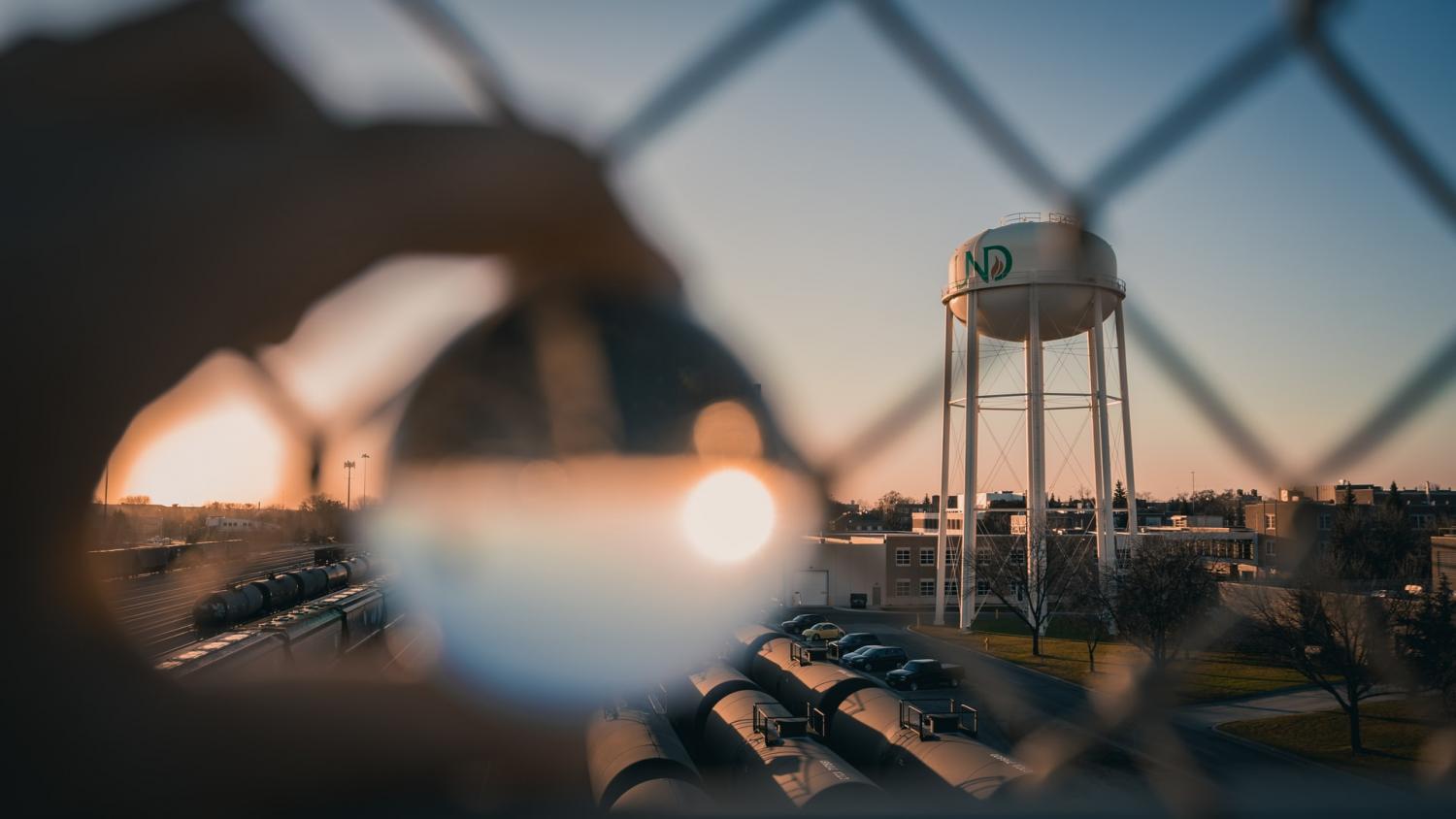
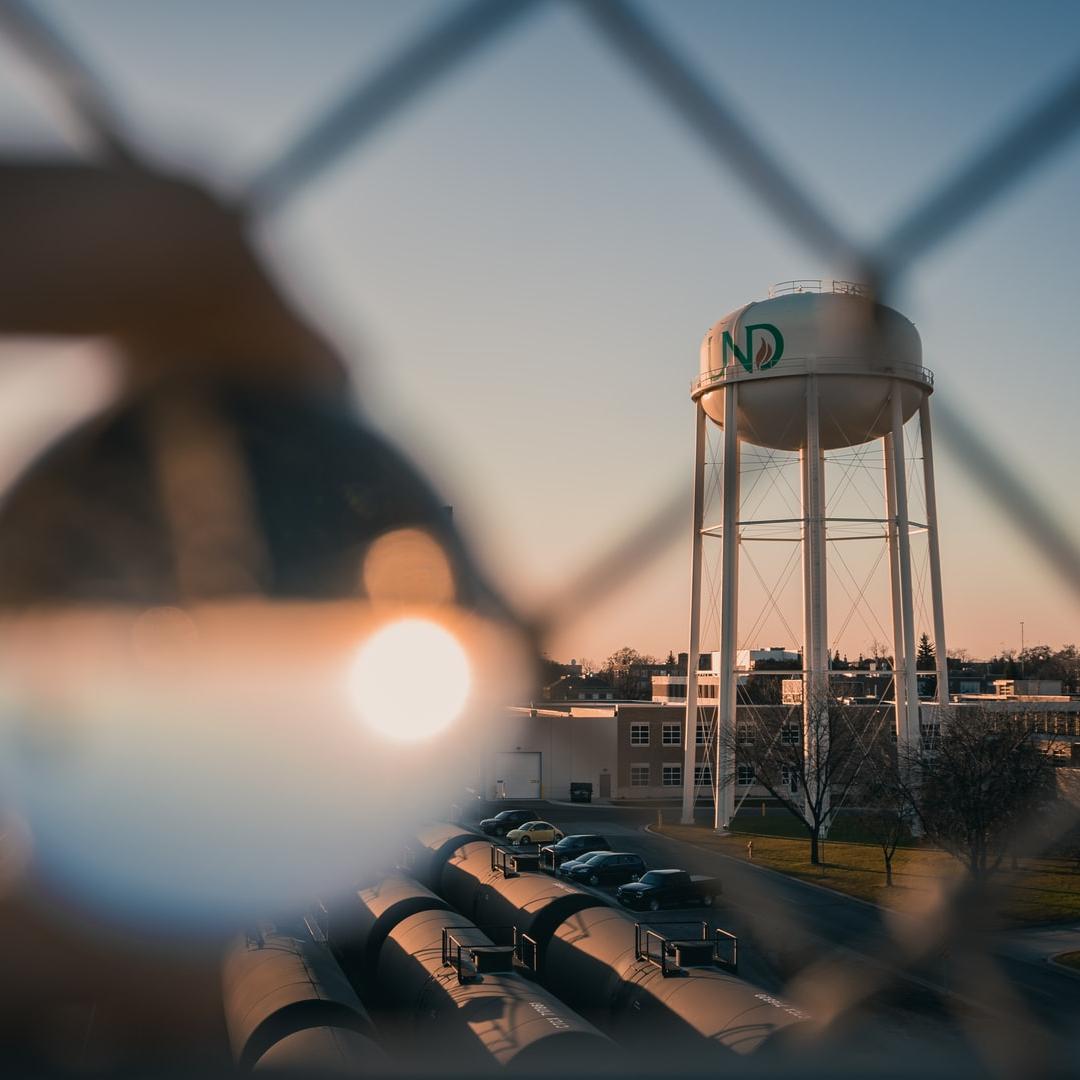
The COVID-19 crisis has brought a new wrinkle to the off-again, on-again saga of the notorious Keystone XL pipeline — and more reputational headaches for its lead developer, TC Energy. The Donald Trump administration is supporting the once dormant project as a job creator. However, the very nature of those jobs has raised concerns that Keystone XL could spread COVID-19 in vulnerable communities where healthcare resources and sanitary infrastructure are already sparse.
That puts TC Energy (formerly TransCanada) in an awkward position, as it seeks to burnish its reputation on climate change, safety, and relations with indigenous communities.
Adding fuel to the fire, the clock is ticking. TC Energy indicated that construction was beginning on a leg of the pipeline earlier this week, only to announce yet another delay.
The Keystone XL pipeline is more than an environmental issue
The issue of community health is not a new one for the Keystone XL pipeline. The project became notorious during the Barack Obama administration mainly for its potential to create significant environmental impacts on a local, regional and global scale, including pipeline leaks and greenhouse gas emissions.
Keystone XL also drew attention to civic impacts that can occur with a sudden influx of temporary construction workers.
A review of a similar project in 2009 suggested that careful planning can reduce or eliminate the impact of pipeline projects on local law enforcement, emergency response, healthcare, housing and other social concerns.
However, as the Keystone XL pipeline wended its way through the approval process, local opponents and environmental advocates continued to raise concerns over the potential for civic as well as environmental impacts, including the taking of private land by eminent domain and the disruption of sensitive environmental and cultural areas.
In addition, the oil and gas boom in nearby North Dakota has demonstrated that significant community impacts can occur when companies fail to plan ahead for temporary workers.
Keystone XL: The COVID-19 effect
The COVID-19 crisis has made physical, onsite activism and protests difficult and dangerous, and that seemed to provide an opportunity for TC Energy to push forward with construction.
Early last week, the Canadian province of Alberta — the source of the tar sands-based oil that will flow through the pipeline if completed — provided TC Energy with $7.5 billion in credit guarantees and other financial support, enabling the construction to push forward immediately.
However, the battle continues in court.
Among the legal organizations seeking to block the project is the Native American Rights Fund (NARF), which submitted a filing for the the Fort Belknap Indian Community and Rosebud Sioux Tribe earlier this year.
NARF argued that the Keystone XL pipeline would cross Rosebud mineral estates held in trust by the United States. “Federal agencies have a duty to prevent mineral trespass and protect Indian lands and tribal mineral estates,” the group argued.
NARF requested that construction be suspended while the case is heard.
As the COVID-19 outbreak accelerated in March, the organization also requested a delay over community health issues related to the new threat. “With this construction, workers will descend on the communities along the pipeline’s proposed path,” NARF said in a public statement on April 3, referring to the pipeline’s route through Montana, South Dakota and Nebraska.
NARF cited Fort Belknap President Andrew "Andy" Werk Jr., who explained: “Fort Belknap has declared a state of emergency on the reservation because of the extremely dangerous COVID-19 pandemic and its threat to the health and well-being of the Gros Ventre and Assiniboine tribal members.”
“We are very concerned about TransCanada bringing in outside construction workers from all over to build this pipeline within an hour from our reservation,” Werk added.
Cooler heads may prevail
Though construction workers may be deemed essential, it is difficult to make the case for expediting construction of Keystone XL at a time when global oil prices have collapsed and estimates of U.S. deaths from COVID-19 range from 100,000 to 250,000 and up.
Officials in states along the Keystone XL route are also beginning to take the COVID-19 threat more seriously, though so far none have publicly called for a halt to construction.
In particular, the news out of South Dakota seems to support the case for a delay of several weeks, if not several months. On April 3, USA Today reported that South Dakota is preparing for a peak of 5,000 hospitalizations in June, with up to 70 percent of the population infected and the potential for up to 18,000 deaths.
Against this backdrop, on April 2 news surfaced that TC Energy has decided to delay the start of construction at a Keystone XL site in Montana, pushing it back to an undisclosed date later this month.
It remains to be seen whether or not that delay will extend any further.
TC Energy’s website certainly suggests that the company should be willing to suspend Keystone XL construction, at least until the outbreak is under control.
“Even though the energy landscape is changing, our facilities are in place for generations and we are unwavering in our commitment to sustainability,” TC Energy proclaims, referring to workplace and community safety, water and wildlife conservation, greenhouse gas emissions, and Indigenous groups, traditions and lands.
All of that appears to be so much hot air, considering that TC Energy seems intent on adding more workers — and more risk — to an already grave situation.
Image credit: Jason Rojas/Unsplash
Big Companies Step Up With Emergency Funding for Small Businesses
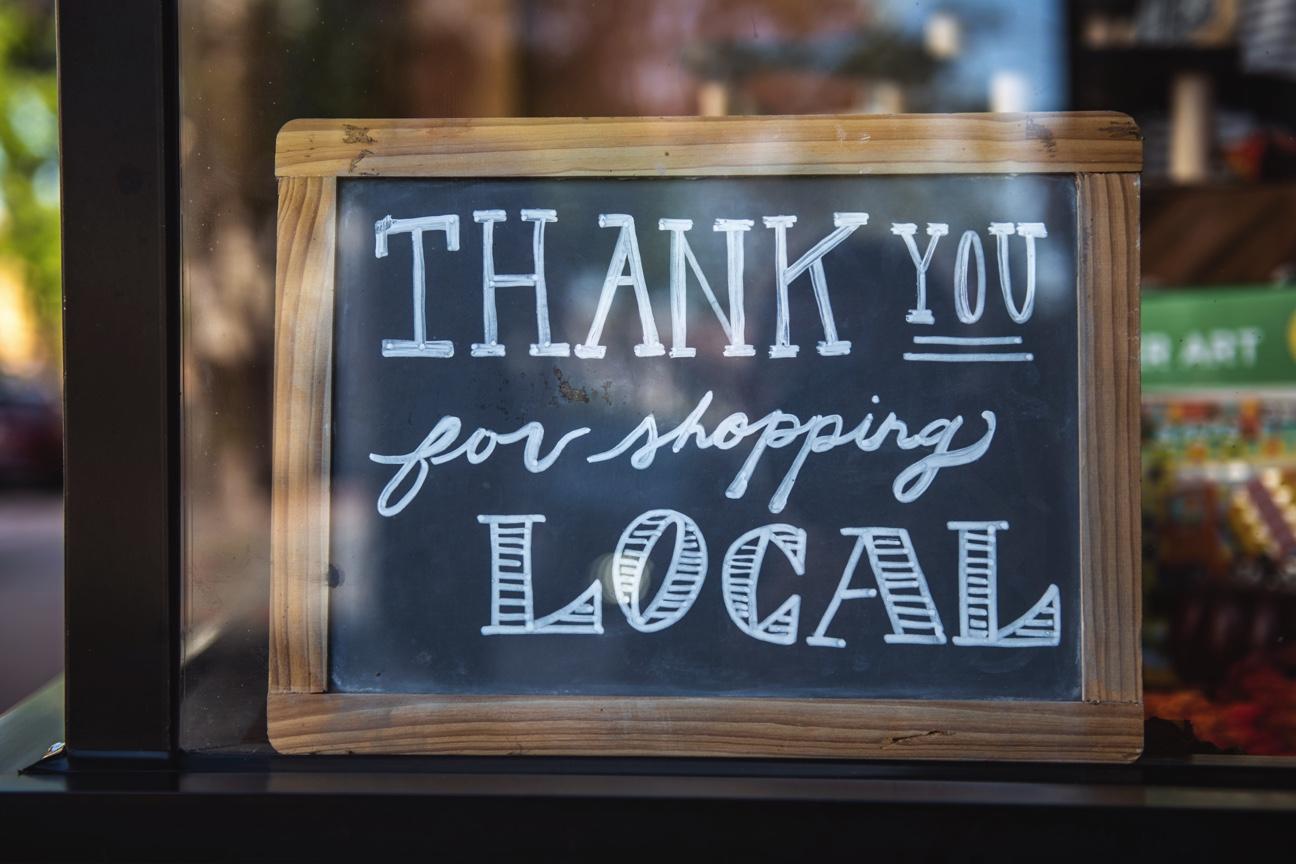
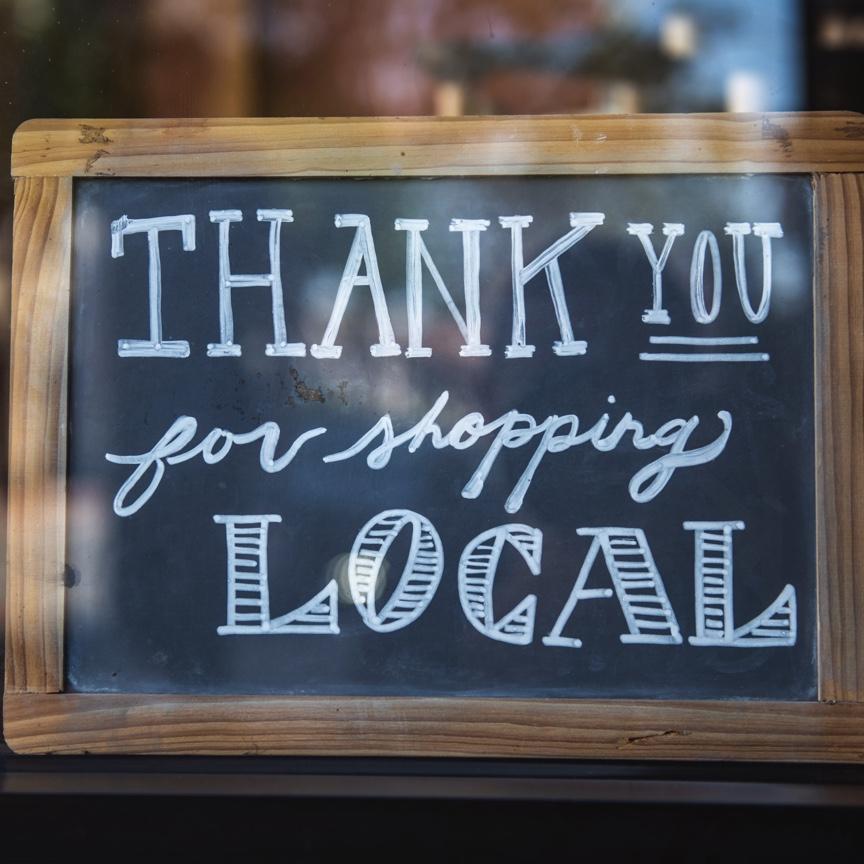
It should come as no surprise that consumer confidence has suffered since cities, states and countries ramped up shelter-in-place orders this month. Unemployment is high, and people aren’t spending copious amounts of money, pushing countless small businesses on the brink of closing for good.
March’s consumer confidence index from The Conference Board dropped 12.6 points since February. Politico identifies this as the lowest consumer confidence has been since June of 2017.
Most small businesses have very limited liquidity
Small businesses are experiencing a unique challenge during this crisis. Compared to major corporates, small businesses generally have less liquidity available to use in times of need. According to a study by the JPMorgan Chase Institute, on average, Main Street small businesses in the United States have enough cash reserves to cover less than a month of inactivity.
“Most businesses are going to zero revenue, and most businesses can’t survive long without any cash flow," WalletHub CEO Odysseas Papadimitriou said in a statement. "Like most consumers, most businesses have too little saved and too much debt to hunker down and ride out this type of shock to the system without outside intervention.”
While Congress’s $2 trillion relief package offers support to small businesses to the tune of $377 billion, sources say that amount won’t cover months of nearly zero revenue.
A study by Bloomberg and the analytics firm Dun & Bradstreet calculated that it would take four times that amount to replace the revenue most businesses with 500 employees or less would have made in three months.
Keeping small businesses afloat
In some cases, customers have deployed themselves to fill the revenue gap. When Powell’s Books in Portland — the self-proclaimed world’s largest independent bookstore — announced it would have to lay off the “vast majority” of its employees, loyal customers stepped up. An update from owner and CEO Emily Powell thanked customers for buying enough books online for the store to fully rehire 100 workers with benefits.
While individuals may step up for some businesses, others will likely have to rely partly on generous grants to persist. Applying to government agencies is one option. Many state and city governments area also establishing emergency funds for small businesses. And other opportunities are popping up as larger businesses launch coronavirus-specific grants to assist their smaller counterparts:
Google is giving $800 million in support of small- and medium-sized businesses, in the form of ad credits and an investment fund.
Facebook is creating a $100 million grant program that will go to 30,000 businesses around the world.
Amazon has set aside $5 million for a “Neighborhood Small Business Relief Fund” for those in the Seattle area.
Texas Woman’s University has established a $1 million grant program for woman-owned businesses, allocating $10,000 each.
Hello Alice, a machine-learning platform for female entrepreneurs, is offering $10,000 grants.
The CDFA/Vogue Fashion Fund has rebranded as A Common Thread as it retools to provide emergency funding for American fashion designers who have been affected by this pandemic.
SheaMoisture announced a $1 million relief fund in a bid to help support small business owners of color and women entrepreneurs.
We need small businesses to carry on
If retaining the vitality of Main Streets across the country isn’t reason enough to support the likes of local cafes, family restaurants and gift shops, there is also the massive economic impact.
According to the U.S. Chamber of Commerce, only a tenth of a percent of U.S. businesses are not small. Half of the American population is employed by small businesses, and those shops, stores and boutiques create seven of every 10 new job opportunities across the country.
Grants are likely to be only part of the picture for small business survival. The Harvard Business Review (HBR) outlines three factors essential for small businesses to make it through this crisis. Liquidity is an important element, but the HBR also points to relief for capital and engagement with policymakers as essential.
The need now is to get available money, however big or small, to businesses. Alignable’s Small Business Pulse Poll shows that 80 percent of small businesses were already negatively affected by virus-related inactivity by March 17, jumping 20 percent in just four days. Today, speed is of the essence.
Image credit: Tim Mossholder/Unsplash
Silicon Anode Batteries: The Future of EV Charging
Similar to many other industries, auto manufacturers are committing to create a more sustainable future with the introduction of new electric vehicles (EVs). Just this year, GM announced a strategy to produce 20 new models of affordable electric vehicles (EVs) to rival Tesla, and Chevy introduced an electric pickup that will be comparable to the gasoline powered Ford F-150 and the Tesla Cybertruck. This change is impressive, but in order for EVs to scale up, we'll need to see a more robust fast-charging network; silicon anode batteries could be the key technology that makes this scenario a reality.
Here's why such a shift in technology: EVs are an environmentally friendly alternative to their gasoline-powered counterparts, but they’re missing one crucial feature that many believe is a barrier to consumer adoption – convenience.
A challenging infrastructure for EVs
The infrastructure and battery capabilities for EV technology today are simply not comparable to the convenient experience that consumers have grown accustomed to with their gasoline-powered vehicles, particularly on longer trips. Gasoline cars can travel up to 400 miles before requiring a five to 10-minute refueling stop to then continue on another 400-mile trip. EVs can only travel 100 to 250 miles (dependent on make/model) before requiring a partial charge that takes anywhere from on to four hours or a full charge which requires eight to 12 hours.
In addition, while there appears to be a gas station (or two) on every corner, EV charging stations are not commonplace yet, meaning drivers have to make detailed plans about charging well in advance of a road trip. The lengthy charge times and limited infrastructure have resulted in consumers choosing to wait to purchase EVs until convenience improves.
A study from TRL noted that adoption of EVs would increase if a rapid charging infrastructure was incorporated every 20 miles on freeways and highways. Thanks to new innovations and pressure from both federal regulators and consumer demand, EV batteries are evolving and incorporating new technology to accelerate the path towards fast-charging capabilities and wider adoption of EVs.
Silicon Anode Batteries: The Next-Gen Batteries for EVs
To create a level of convenience that will foster wide consumer adoption, today’s EV manufacturers are designing next generation silicon anode batteries that can fast charge over 80 percent of its capacity in five to 10 minutes, without physically damaging the battery.
Many lithium-ion batteries today use graphite anodes, which have hit their limitations for power and energy density. Now, however, more manufacturers are looking to new material technologies such as silicon to surpass these anode limitations and achieve never-before-seen milestones in the areas of miles per charge and recharge speed. Silicon anode batteries have already improved power density upwards of 20 percent, yet they still have a long way to go before reaching their full potential. The largest names in the business such as Ford, GM and BMW have taken note and are actively seeking out joint development with companies that show promise in the silicon development space.
Creating generation 2.0, 3.0 and 4.0 lithium-ion battery designs that pack more of a punch with power and energy density will require a much higher percentage of silicon in the anode. However, without the right silicon precursor the silicon anode can develop issues with battery swelling. Designers are partnering with material scientists to create silicon nanotechnologies and advanced material formulations that reduce this risk by incorporating the most promising silicon precursors into the manufacturing process, including one known as cyclohexasilane (CHS). CHS (Si6H12) delivers a much higher atom economy and speed of device fabrication than traditional precursors and most importantly it generates amorphous nanostructures, meaning it can be used to make better devices amenable to fast charging without swelling.
The use of CHS-derived silicon within a lithium-ion anode also helps batteries withstand fast recharge cycles with less degradation. We’ve all experienced battery degradation before, such as your cell phone or computer holding less of a charge as time goes on. Degradation is an even greater concern for EV owners who are already skeptical of the time needed for an efficient EV battery charge. While creating a more powerful battery with faster recharge is valuable, recharges must be able to maintain battery performance with limited degradation over time to give consumers the confidence they need to purchase EVs as their main transportation vehicle.
Lithium-ion battery manufacturers are taking advantage of advanced materials to build a more convenient and cost-effective vehicle capable of meeting consumer demand. Silicon anodes offer battery manufacturers and consumers a new level of confidence in their batteries, bringing us closer than ever before to a future where EVs will dominate our highways.
Image credit: Unsplash
EU Leaders Debate the Future of a European Green Deal
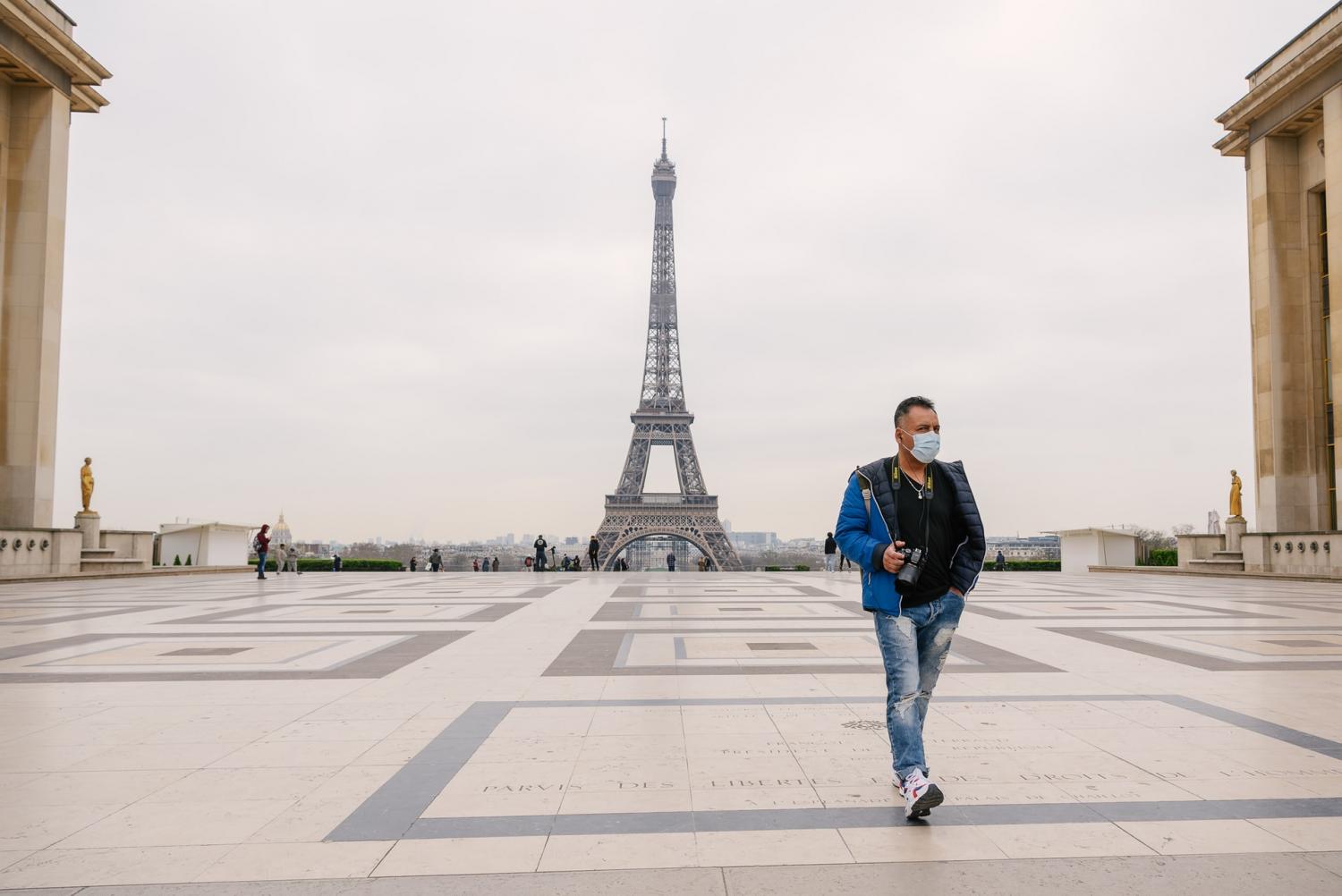

With discussions already underway about how to restore and sustain the European economy after the novel coronavirus pandemic, European Union (EU) leaders have made it clear they want to see more sustainable development in long-term economic plans, and stimulus funds may depend on how sustainable those plans are. Once the continent emerges from this current crisis, could the results include what some advocates hope are a "European Green Deal?"
A long-term focus on sustainable development
EU leaders released a statement March 26 following a video meeting that called for member countries to start preparing for a “normal” time similar to before the pandemic. EU leaders are hopeful that such planning includes provisions for an increased focus on sustainability, as well more digitalization of business operations across the continent.
The statement re-enforces the EU’s commitment to its European Green Deal, an outline to help Europe become the world’s first climate-neutral continent by 2050. Some EU members had asked that the Green Deal be put on hold until industries fully recover from the devastation resulting from the coronavirus pandemic, but the mood of many in the EU leans toward folding the European Green Deal into recovery.
“People’s welfare in the longer term is inextricably linked to the health of our environment and climate,” Ester Asin, the director of the WWF’s European policy office, said in a EURACTIV article. “A truly ambitious, people-centered European Green Deal must be part of the response and will leave Europe better equipped to tackle the ongoing climate and biodiversity emergencies.”
More business leaders support the European Green Deal
Some executives already are on board. Karol Gobczynski, climate and energy manager for the IKEA Group, recently tweeted “EU leaders back ‘green transition’ in pandemic recovery plan to create more resilient and zero emissions economy with more jobs, lower costs of living clean air...let’s co-create [a] fairer and inclusive society.”

Eight environmental organizations submitted a letter calling on EU leadership to tie stimulus and bailout money to a commitment to the Green Deal, and recommended the EU invest in businesses “in a transparent, viable and sustainable way.”
“This is the time to bounce forward and accelerate the shift towards an economy which is climate neutral, protects and restores our natural world, health and wellbeing, and lets nothing go to waste - in a way that is fair and leaves no-one behind,” said the letter’s authors.
The eight authors of the letter also declared:
“…the stimulus packages must support ‘future-proofing’ companies through a rapid shift of their business models towards sustainability, thereby ensuring a much higher return on public investment. For large companies in particular, public support should be conditional on a full alignment with the Paris Agreement, and a substantial greening of capital expenditure plans.”
Europe’s transportation sector could see strings attached to any bailout
At the same time, of course, fossil fuel, automotive and airline companies also are struggling and will be applying for stimulus funds as well. Some reports indicated that car manufacturers were seeking to have new emissions standards delayed until after the pandemic, mirroring a recent decision here in the U.S.
One suggestion for ways companies could meet the European Green Deal was to require a car manufacturer to devote more time to developing electric cars in exchange for bailout money.
More than three dozen renewable energy and efficiency organizations also maintain this is a crucial opportunity to reshape business operations. “Investments in a zero-carbon infrastructure and innovative solutions are the best and most cost-effective route to economic recovery on a national and supranational level, while at the same time preparing the grounds for a secure and sustainable energy system,” according to a letter they submitted to the EU.
That doesn’t mean such a shift will be easy. “This is the big political battle,” warned Laurence Tubiana, CEO of the European Climate Foundation and a designer of the Paris Agreement, told Climate Home News (CHN).
“We can make the right choices and address the short economic crisis at the same time as making sure we don’t lock the economy in Europe into a fossil fuel economy,” Tubiania continued. “There are many areas where we could take the elements of the Green Deal and quick-start them with massive investments that governments are ready to go for anyway.”
EU Commission Vice-President in Charge of the Green Deal, Frans Timmermans, heard the sentiments, saying recently on Twitter the EU had “the ability to manage both” the coronavirus crisis and the long-term goals of the Green Deal.
Focusing on clean energies and technologies is “challenging” right now with everyone clamoring for stimulus money and just trying to stay afloat, noted Samantha Gross, a fellow in the Cross-Brookings Initiative on Energy and Climate, in a CHN article.
The lower cost of renewable energy and dropping interest rates no doubt would eventually favor large investments toward an energy transition. “But we need to get out of this crisis mode before businesses can take advantage of these conditions,” Gross added.
Image credit: Fran Boloni/The Paris Photographer via Unsplash
COP26 Postponed Due to COVID-19: What Does It Mean for Global Climate Negotiations?
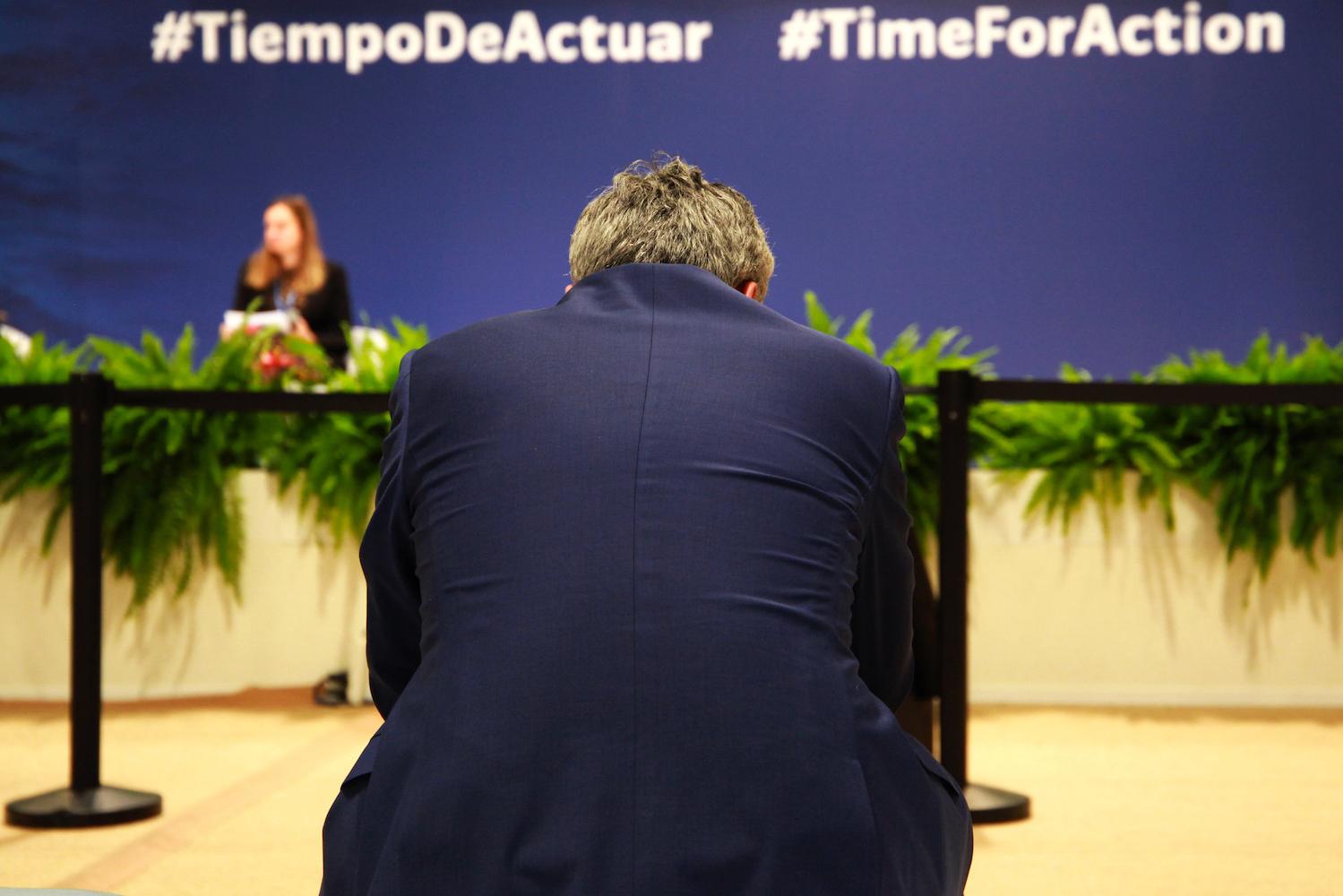
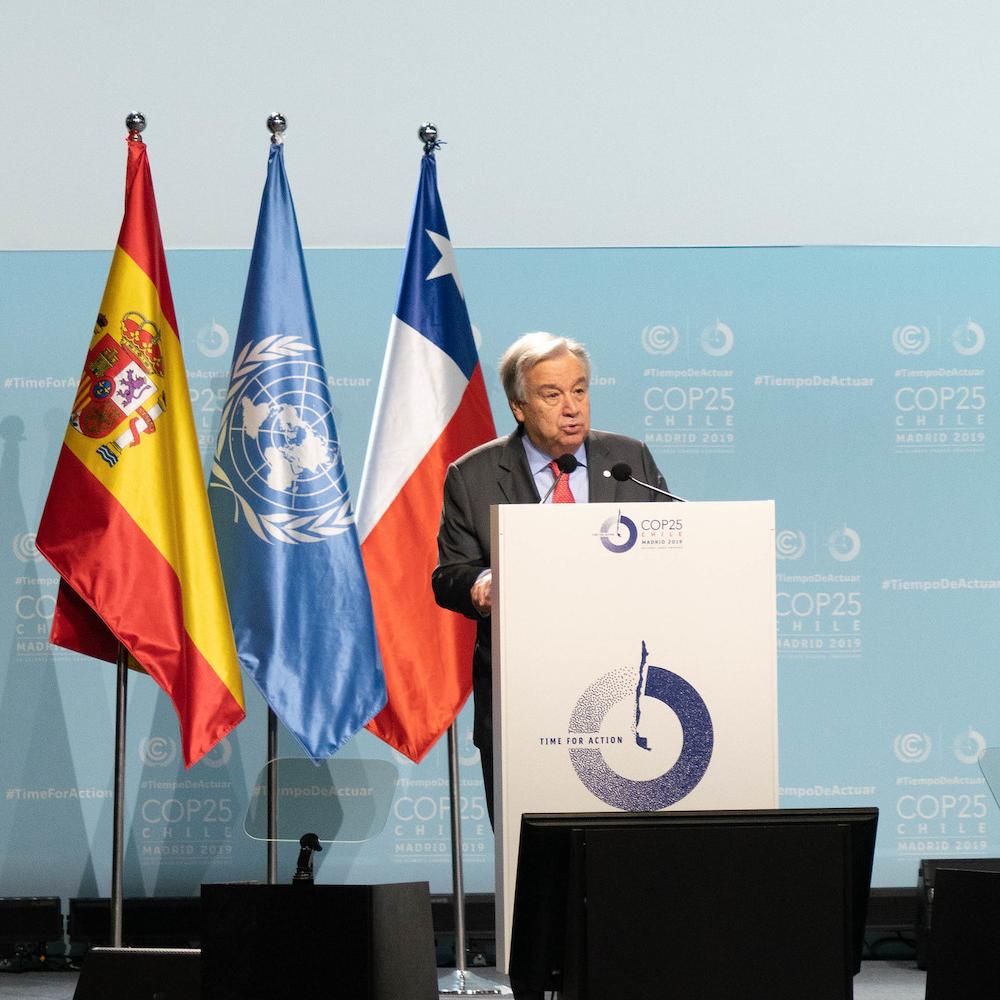
This year's United Nations climate talks (COP26) have been postponed as governments around the world work to contain the spread of the novel coronavirus. The talks, originally set to convene in Glasgow in December, will be rescheduled for an unspecified date in 2021, the U.N. Framework Convention on Climate Change (UNFCC) and its host partners in the U.K. and Italy announced Wednesday.
"The postponement of COP26 is unfortunately a needed measure to protect all delegates and observers," Carolina Schmidt, Chile's minister of environment and president of the COP25 proceedings last year, said in a statement. “Our determination is to make sure that the momentum for climate ambition will continue."
This was set to be the most pivotal COP since the adoption of the Paris climate agreement in 2015. While delegates, including COP26 President-Designate Alok Sharma, say the postponement was clearly necessary to protect public health, many are wondering what it means for the future of global climate negotiations and the collective fight to cap temperature rise at 1.5 degrees Celsius above pre-industrial levels. Here, we break down data and expert opinions to give you the need-to-know.
COP26: Pivotal negotiations derailed by a public health crisis
This year, world leaders are challenged to update their commitments to the Paris agreement, formally known as nationally determined contributions or NDCs.
Six countries have already submitted their updated NDCs, according to the World Resources Institute's Climate Watch tool. But these countries, including Norway and Japan, as well as developing nations like Suriname and the Marshall Islands, represent a mere 2.8 percent of global emissions, according to Climate Watch data.
Another 34 countries, including those in the European Union, stated their intentions to update their NDCs this year. And 107 more, including Mexico and most of Africa, say they intend to enhance ambition or action in an NDC by the end of 2020.
"A number of countries — particularly the smaller, developing economies — have already shown leadership and announced they will come forward with enhanced plans," Andrew Steer, president and CEO of the World Resources Institute (WRI), said in a statement on Wednesday. "These are extremely welcome. But now we need more of the large economies to step up to the plate and set more ambitious targets."
Notably, wealthy or populous countries including Canada, Brazil and China have yet to communicate their intentions for 2020, while President Donald Trump is holding firm in his decision to withdraw the U.S. from the Paris climate agreement.
Steer encouraged governments — particularly those in wealthier, more developed countries — to bake their contributions into recovery plans passed in light of the COVID-19 pandemic. "These national climate plans should not be disconnected from the recovery, but instead should be an integral part of national efforts to create jobs, boost growth, reduce health risks, and build more resilient economies," he said.
The EU has already started to move in this direction. In a statement released last week, EU leaders advocated for a "green transition" in response to COVID-19, saying recovery measures should promote "sustainable growth." China has also indicated its recovery plans "could include green infrastructure," according to a recent report from Morgan Stanley.
"In the face of a health emergency and the climate crisis, we cannot afford to tackle one or the other. We must do both," Steer insisted. "The COVID-19 pandemic serves as a tragic reminder that global risks require collective action. Leaders need to work together to identify and prepare early for such risks, share information, and mobilize resources to make their own citizens and others safer and healthier."
While the future of these updated NDCs remains uncertain, the language in the Paris agreement requires a decision by the end of this year. As Richard Black, director of the Energy and Climate Intelligence Unit, a U.K. nonprofit focused on climate issues, observed on GreenBiz earlier this week: "The wording is very explicit: these things should happen 'by 2020,' not 'by COP26.'"
Clean-up from COP25: What happens now?
COP25 in Madrid closed disappointingly at the end of last year, leaving key issues unaddressed. World leaders agreed on some points related to climate-induced loss and damage in developing countries. But the outcomes fell short of what negotiators in these nations requested, and decisions about climate finance for vulnerable countries in this bloc were essentially punted to COP26 in Glasgow.
Additionally, the 2019 negotiations in Madrid represented another COP come and gone without rules for a global carbon market. Following the negotiations, business leaders from the International Chamber of Commerce issued a statement of "dismay" at the lack of consensus, insisting market mechanisms are "vital to enhanced ambition" on climate change.
Still, the turnover in global emissions trading hit a record high of $214 billion last year, Reuters reported in January. The EU’s Emissions Trading System (ETS), the largest carbon market in the world, made up nearly 80 percent of trading volume, with emissions priced at a record $28 per ton.
Meanwhile, private-sector and sub-national actors — from U.S. state governments and businesses to institutional investors managing a collective $37 trillion in assets — restated their commitments to the Paris agreement despite the disappointing outcome in Madrid.
Again, whether any movement on these issues will happen this year in light of the postponement remains unclear. But stakeholders including the Climate Group, an international nonprofit coalition of businesses and governments, say sub-national and business action will remain critical in the interim.
"A huge international diplomatic effort is required to secure greater national commitments to deliver on the Paris agreement and that is incredibly challenging right now. In the meantime, we know our networks of businesses and subnational governments will continue to drive the climate agenda,” Helen Clarkson, CEO of the Climate Group, said in a statement.
The way forward
Not much is certain as the novel coronavirus sweeps the world, threatening millions of lives and bringing the global economy to a virtual standstill, but experts gave some reason for optimism.
“The response to the COVID-19 pandemic is showing that the nations of the world can come together to tackle global challenges, and that the policy landscape can shift quickly when there is sufficient political will," Alden Meyer, director of strategy and policy at the Union of Concerned Scientists, said in a statement. "This should give us hope as we move forward in the fight to tackle the global crisis of climate change.”
Image credits: Flickr/U.N. Framework Convention on Climate Change